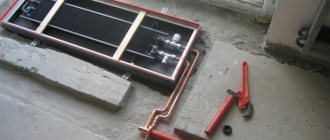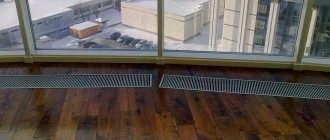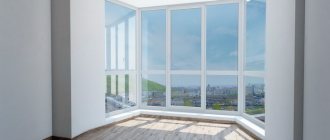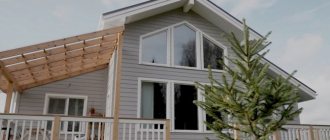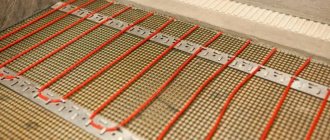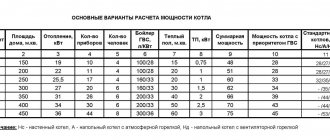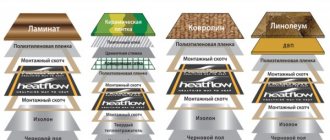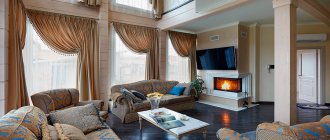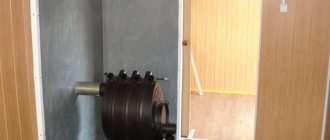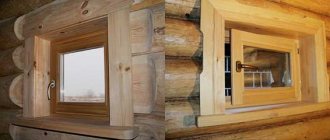Warm loggia
Warm loggia
Heated windows. Warm loggia. Warm balcony.
Modern architectural and construction solutions in the field of facade glazing can give any building a special look. Glass structures allow the architect to realize the most original and non-standard projects, and looking at the appearance of urban new buildings, it becomes obvious that the use of glass structures by developers is the most popular trend. This is explained by the fact that façade glazing technology allows you to expand the usable area of residential premises, increase visibility and add natural light to them. The glazed facade gives the house originality and makes it stand out against the backdrop of typical buildings.
Heating of windows and heating of rooms with panoramic glazing.
The appearance and design of heating devices in rooms with stained glass windows, from the point of view of design and functional efficiency, is important, since heaters that are inconsistent with the architectural design can completely destroy it. Conventional panel or aluminum radiators are not suitable in this case.
The reason is not only that they will not fit into the overall design, both internal and external, but also because the surface of the glass is the coldest in the entire room and condensation is likely to form on it. For example, in the kitchen the relative humidity level can reach up to 80%. The dew point value is 18-19°C. If the temperature on the surface of the window is at least 3 °C above the dew point, i.e. about +21 - +24 °C, then the windows will not fog up, in other words, “cry”. Accordingly, in order to prevent condensation from falling on the glass, it is most rational for heating devices to be located along the entire perimeter of the glazing, creating a continuous thermal curtain. Heating windows using warm baseboards is most effective. Warm air rising in a continuous stream along the entire perimeter of window structures will create a reliable thermal barrier and will not allow moisture to condense on the inner surface of the glass.
Warm loggia. Warm balcony.
How to make a loggia warm? Let's consider a popular trend in apartment redevelopment - combining a loggia with an adjacent room, living room or kitchen. Combining a loggia with an apartment is an excellent solution to increase usable space, especially if the dimensions of the apartment are small. Such a reconstruction usually entails special measures to improve the quality of windows, additional insulation of walls, floors and ceilings, since the thermal resistance of enclosing structures should not be lower than building standards (see SNiP thermal protection of buildings). Are you interested in preventing the heat on the balcony from escaping onto the street? Then you can’t do without reliable thermal insulation
Insulating the loggia is very important, since an insufficient level of thermal insulation of the fences will lead in the future to dampness, condensation, the formation of mold, and disruption of the microclimate in the room combined with the loggia, so it is better not to save on insulating loggias and balconies
But insulating the loggia is not all. Thermal insulation is like a person’s clothing; it prevents heat from escaping, but does not produce it. In order for a loggia or balcony to become truly warm, heating must be installed there. The loggia becomes part of the living space, which means the total amount of heat loss will increase, and the heating devices installed in the room initially were not designed for the connected volume and heating the loggia will require additional thermal power. Heating a loggia, taking into account the specifics of the room, will be especially effective using baseboard heating. Uniform heating of the inner surface of the walls will create an additional layer of thermal protection, preventing the formation of dampness in the corners and condensation on the windows.
Insulation of balconies and loggias in combination with installed warm baseboards allows you to achieve the required level of comfort in cold weather. Heating a loggia in urban conditions is most simply and quickly accomplished using the electric version of the baseboard system. A warm electric baseboard can be quickly installed even in winter, when the lack of heat on the loggia is especially noticeable, and electric heating does not require preparatory work.
Floor radiators for panoramic windows – megasklad24.ru
First, let's figure out where heating devices that are installed on the floor are used.
It is advisable to use water floor radiators in the following cases:
- In rooms where, for one reason or another, it is not possible to install traditional radiators for wall mounting. This often happens in houses where the walls are made of loose material (aerated concrete, foam concrete) or covered with plasterboard. Even light aluminum appliances cannot be hung on them.
- In shop windows and shopping centers, low floor heating radiators are used for panoramic windows. Such glazing cannot be left without a thermal curtain, because condensation will accumulate on the windows and ice will form.
Unlike wall-mounted heating units, floor-standing radiators are installed only on the floor and are not mounted on walls. The height of these devices is less than that of their sectional counterparts. The stand for the unit is rigidly attached to the floor.
Advantages and disadvantages
The advantages of low heating radiators include the following:
- the unit can be mounted anywhere, regardless of the height of the windows;
- a low heating device saves free space in the room;
- Thanks to its stylish design and attractive appearance, the battery does not spoil the interior of the room and fits into any room design;
- can be installed in a room with panoramic windows to create a thermal curtain in front of them;
- during installation, the material and strength of the walls does not matter, because the batteries are not attached to them.
Such heating devices also have disadvantages, they are as follows:
- To connect the battery to the heating system, you need to lay pipes in the floor screed, because they will interfere with the placement of furniture. Hidden installation of pipelines is considered not the best option, because it is more difficult to maintain and repair networks.
- The heat from these heating devices is distributed unevenly, so the unit is not suitable for heating rooms of considerable height. In this case, some areas of the room may not be heated at all.
- Due to the hidden installation of pipelines, the floor screed in the room is made to a certain height, which creates difficulties when attaching radiators.
A significant disadvantage of floor heating units is that they are more expensive than sectional wall-mounted radiators, and they heat the room worse.
Types of floor batteries
All horizontal heating radiators that are mounted on the floor are divided into several types depending on the material used:
- Cast iron batteries were widely used in the last century, but they cannot boast of aesthetic appeal. Their main disadvantage is that the inside of the structure quickly silts up, so it needs to be cleaned regularly (about once every three years). When subjected to mechanical stress, cast iron can crack. The same thing happens with water hammer.
- Steel radiators are more popular today. They are quite durable and visually attractive. However, steel plate devices often leak in the weld area.
- The most reliable and beautiful bimetallic units. There is a steel core inside the aluminum body. Thanks to this, the heat transfer of the device is quite high, and optimal strength allows them to be installed in centralized networks with high pressure.
- Aluminum batteries are the lightest, but they are not designed for high pressure in the network, so they are used only in autonomous systems. It is important to carefully select the material of pipes and fittings, because aluminum forms galvanic couples with some metals.
By design, floor-standing units can be panel or sectional. Panel batteries are made only from steel, while sectional batteries are made from bimetal, cast iron or aluminum. In addition, all heating devices come in different heights.
Important! Higher batteries have the smallest heat losses with a small number of sections.
Floor-mounted radiators
There is another type of device - a floor heating radiator built into the floor. The presence of such heating devices that are built into the floor will be indicated only by a decorative grille in the floor.
Underfloor heating elements, which are built into the floor, provide a more hidden installation of the heating system. Even from the name it becomes clear that they are installed directly in the floor, and the heat is released through decorative grilles installed flush with the floor covering.
Such devices can be installed directly in the doorway, and will not interfere with anyone passing by.
Their advantage is complete invisibility - from above you will only see a decorative grille. Due to this, they are often used for rooms with an exclusive design, where the placement of interfering and unnecessary elements cannot be allowed.
The only drawback is that such devices are placed in special niches, which is why installation is best planned during the construction phase of the building. Installing radiators built into the floor in already built and finished buildings will create huge problems for you.
This is not a completely standard solution, and therefore you may think that the cost is too high. If you decide on such heating, get ready to spend a lot.
Built-in devices
Heating radiators built into the floor are used to heat office, retail and residential establishments.
They can be used in greenhouses and conservatories to create temperature conditions that are comfortable for plants. The operation of the device is based on the principle of convection.
Built-in units promote intensive air circulation, so they heat the room faster and more efficiently, which reduces heating costs.
Worth knowing! There are built-in radiators on sale with automatic temperature control, condensate removal function, and the ability to program the microclimate in the room.
The unit has a simple design. Inside the metal housing there is a heat exchanger with convective plates. The body of the device is built into the floor, and is covered with a durable decorative grille on top.
Heating options for windows
When conventional radiators do not fully cope with the functions assigned to them or a different type of heating system is used in the premises, it is recommended to install heated windows to ensure comfortable conditions. Thanks to this solution, it is possible to minimize heat leakage and maintain optimal temperature conditions in the rooms at the lowest possible cost. There are several options for heating windows on the market, so you can always choose the most suitable one.
In what cases is it recommended to use heated windows?
If the window openings have a large area, then it is definitely better to immediately install heated windows, since the flows emanating from the radiator are not able to create an effective thermal curtain. These models are also recommended when rooms are heated:
- heated floor system;
infrared heaters installed outside window openings;
warm air through ventilation ducts;
fireplaces, etc.
In all of the above cases, there are no full-fledged thermal curtains opposite the window openings, which can provoke a whole list of negative consequences:
- rapid decrease in temperature in the rooms;
excessive condensation;
the appearance of fungus and mold on various elements of window structures.
Aluminum, wooden and plastic heated windows do not have such problems. In addition, they not only help create comfortable conditions for living and working, but also allow you to significantly reduce heating bills.
Window heaters
These products are designed to slow down the process of heat exchange between indoor spaces and the street. They also allow you to additionally warm the air in the rooms, thereby reducing the load on the central heating system.
Today, window heaters are represented by two types of devices:
- infrared elements - devices whose operation does not generate air currents, since they heat objects located in their area of action;
air thermal curtains - such a window heater supplies a powerful stream of air heated to a certain temperature parallel to the opening, due to which an additional invisible barrier is created between the room and the street.
Such devices not only retain heat and heat the rooms, but also prevent the appearance of drafts that can occur if the windows are slightly depressurized.
Flexible window heating system
Infrared elements and thermal curtains are generally effective, but have some disadvantages. For example, they require space for installation, sometimes create noise and in some cases have a negative impact on the interior. European engineers have figured out how to make a quiet and unnoticeable device that prevents windows from cooling. Its work is based on thin heating elements, which are a flexible tape that runs along the perimeter of the glass unit. Such a system consumes little energy and increases the temperature of the glass unit, eliminating cold bridges in both blind and active sashes.
In addition to being economical and compact, this system is suitable for windows that are already in use. Thanks to the minimal thickness and flexibility of the heating elements, it is possible to remove the glass unit from the frame, wrap it in tape and insert it back, and then connect it to the control unit. This device prevents condensation from forming and slows down the heat transfer process. Its integration guarantees the absence of frost on the windows even at very low temperatures.
The flexible system is best suited for openings with relatively small dimensions, since it slightly heats these products only around the perimeter. If significant heat loss through the windows is expected, then it is better to use a device that is able to heat the glass over its entire area.
Heated double-glazed windows
Recently, there has been an increase in demand for windows in which heated double-glazed windows are installed, capable of creating a thermal curtain directly in the air chamber itself. Their operating principle is based on heating a special coating, evenly distributed over the entire area of the glass, with the passage of electric current. A detailed review of these models has been published on OknaTrade. This modification will cost more than the two previous devices, but it is much more advanced and compact than heaters and more functional than flexible heating tapes. In Russia, heated double-glazed windows are recommended for installation in regions with harsh climates, as well as glazing of verandas, terraces, winter gardens and swimming pools.
Regulatory Requirements
Window sill height
In all Soviet-built houses, without exception, the standard distance from the floor to the window was 70 - 85 centimeters.
As is easy to see, window openings do not start from the floor.
Why? Yes, simply because heating radiators were mounted on the window sill, creating a thermal curtain in front of the window opening.
The function of a radiator is to create a thermal curtain in front of the window.
Why do windows need a thermal curtain? It solves at least two problems:
- Eliminates the appearance of cold drafts. Air from the street, penetrating inside through the gaps of the window frames, is mixed with the rising air flow from the hot battery;
A window without a thermal curtain will become a source of cold in winter.
- Warms up the glass, eliminating the formation of condensation and frost on them.
The thermal curtain created by the radiator warms up the glass.
There was no GOST for the height of the window from the floor in the USSR, and it still doesn’t exist now. However, indirect mention of this parameter can be found in SNiP 3.01.01-87, which sets out the requirements for load-bearing and enclosing structures .
What should be the height of the window from the floor according to SNiP? The document makes the following recommendations:
- The heating radiator must be separated from the floor by at least 10 centimeters. The gap is necessary so that the proximity of the floor does not limit air convection;
- The gap between the battery and the window sill should be at least 6 - 8 centimeters. The purpose of creating a gap is the same - not to interfere with convection.
Distances from the radiator to the window sill and floor.
To these values you should add the height of the heating device itself.
The most common cast iron batteries MS-140 in the late 80s, during the years when SNiP was issued, have a section height of 588 millimeters.
Dimensions of the MS-140 radiator.
Adding up the size of the gaps and the height of the battery, we get 76.8 cm. This will be the minimum allowable distance from the window to the floor.
Typical height of a window opening above the floor.
Window area
We found out at what height from the floor builders install windows. Now we have to find out whether there are any regulatory restrictions on their maximum area.
An excessively large window area can create problems for the owner.
The answer can be found in SNiP 2.08.01-89, which regulates the construction of residential buildings. According to this document, the ratio of the window to the floor area of the room should be in the range of 1:5.5 - 1:8.
For attics, the ratio of window area to floor area can be increased to 1:10.
The ratio of window area to floor area for premises for various purposes.
So you decide to go against the rules. You are not interested in what height from the floor the windows are located in apartment buildings of standard designs and what area they have: your windows should be panoramic, from floor to ceiling.
I approve. Three years ago I thought the same way. And now, after this time, I can give a number of compelling arguments in favor of French windows.
Argument one: review
If your windows do not look out onto a garbage dump or the blank wall of a neighbor’s house, why not enjoy the beautiful landscape? For me this argument was the main one. The house is located so that the gables of the attic look out onto the picturesque mountains and the harbor, and I didn’t want to cover them with blank walls at all.
A beautiful landscape is the main argument in favor of a large window area.
Argument two: illumination
As you know, natural light is optimal for the eyes. Our vision was formed under a very specific spectrum of light - solar, and the eyes tolerate deviations from this spectral composition very ... let's say - disapprovingly.
Evolution has adapted our eyes to a very specific spectrum of light.
It is clear that a large window area will provide bright natural light to the room all year round. This is especially important for children who learn from paper textbooks and write a lot while doing homework.
The larger the windows, the better the room is lit.
Argument three: perception of space
An apartment with floor-to-ceiling windows seems much more spacious than the same apartment with standard-sized window openings. The reason is that part of the visible boundary of space is missing. Yes, the windows cannot affect the actual usable area, but the visual perception of the room will change radically.
A room with French windows looks larger than its actual size.
Features of arranging transparent walls
The arrangement of transparent walls that decorate the exclusive interior of the room is accompanied by taking into account a number of important nuances.
- A lot of thermal energy is lost through large window structures, changing the microclimate of the room.
- The difference in parameters of external and internal temperatures forms the air space where cooled flows move.
- In winter, frosty patterns appear, rising temperatures condense vapors, which, after flowing down, become an excellent habitat for harmful fungi.
Preserving the aesthetic appeal of the panoramic glazing design is achieved by assembling a special heating system.
Bimetallic devices for panoramic windows
This type of radiator belongs to heat supply equipment, the high cost of which best corresponds to the quality.
Bimetallic radiators differ:
- High working pressure.
- Compatible with other metals. In them, aluminum is used only for the manufacture of the shell, which increases the aesthetics of appearance and heat transfer. As for the internal casing, equipped with outlets for connection to the system, it is made of stainless steel or black steel.
The height of bimetallic radiators for panoramic windows ranges from 24.5 to 45 centimeters.
What to do
The question is not rhetorical: some of the problems I listed with French windows are completely solvable.
Heating
A low (200 - 350 mm) sectional radiator, a warm baseboard (the so-called wall convector with a height of 13 - 18 cm decorative screen) or an in-floor convector installed in a screed or between floor joists can create a thermal curtain in front of a panoramic window.
Panoramic window with in-floor convector.
My thermal curtain is created by an internal split unit blowing parallel to the plane of the window - a system that is the only source of heat in the attic.
The thermal curtain is created by an internal split system unit installed next to the window.
Cold, overheating and excessive light
These problems can be successfully solved by installing a combined double-glazed window with one energy-saving and one solar control glass.
What kind of glass is this?
Thanks to a thin metal coating, solar control glass reflects part of the light in the visible part of the spectrum (from 30 to 70%), reducing the illumination of the room and its heating in the summer heat.
By the way, it will also save you from prying glances from the outside thanks to the mirror effect. The interior of the room will be visible from the street only at dusk and when the lights are turned on inside.
Cottage with light-protective glass.
Energy-saving glass is equipped with the same metal coating, which, due to its special chemical composition, has limited transparency only in the infrared part of the spectrum. Glass reduces heat loss in winter, when the temperature in the house is higher than outside, and limits the heating of rooms in sunny weather.
Glass is easily recognized by the color of the reflected fire.
A single-chamber double-glazed window with one energy-saving glass transmits a quarter less heat than a double-chamber double-glazed window with conventional glass.
Double-chamber double-glazed window with energy-saving and light-protective glass.
If the windows are already installed, you can turn the double-glazed windows into solar-protective and/or energy-saving ones by sticking appropriate films on the glass.
The film can change the characteristics of your double glazed window.
How to do it yourself? The instructions are extremely simple:
- Wash the glass;
- Cut the film to the size of the glass unit;
- Wet the glass generously with water and a small amount of baby shampoo;
- Remove the film from the backing, press it against the glass and smooth it with a rag or rubber spatula from the center to the periphery, driving out the water.
The film is glued to heavily moistened glass.
The noise problem can be partially solved by installing a noise-proof double-glazed window. Sound insulation is achieved by combining glass of different thicknesses (usually 4 and 6 mm) with variable thickness of spacer frames. As a result, the glazing absorbs sounds across the widest possible acoustic spectrum.
Regular and noise-proof double-glazed windows.
The best heating for panoramic glazing
The Warm Plinth system is recommended for installation under floor-to-ceiling windows.
Panoramic glazing, floor-to-ceiling windows, and a picturesque view from the window are signs of elite modern housing and are mostly represented in business-class housing and penthouses.
Panoramic windows have both pros and cons. Glass “walls” provide maximum daylight. Large windows let in a lot of sunlight and heat, but in summer an excess of sunlight leads to the fact that the room is very hot, and in winter, on the contrary, it is cold, since a large glazing area means significant heat loss.
The thermal conductivity of glass is significantly higher than the thermal conductivity of walls. Therefore, it is necessary to use more energy-efficient window systems and increase the heating intensity of the room.
It is most optimal to install heating equipment around the perimeter of the window unit to help the windows warm up from the inside and raise the surface temperature of the inner glass above the dew point. However, installing a convector or radiator against the background of panoramic glazing will significantly spoil the aesthetics and will look ridiculous with a radiator in the center... In-floor convectors require construction preparatory work and are quite expensive. Thermal curtains with top and side placement are not friendly to physics...
"In-floor" convectors
It is used as a primary heating source - with a fan for forced convection, and an additional one - without a fan.
The design is a finned heat exchanger in a metal trough, covered with a decorative grille. Can be built into both the floor and the window sill.
They have the possibility of one-sided connection to a heat source or as a pass-through convector. They react very quickly to changes in coolant temperature.
In a fanless design, heat is controlled by varying the amount of water flowing through the heat exchanger. Basically, “in-floor” convectors are used in rooms with large windows - offices, supermarkets.
Most of the possible methods of heating rooms with panoramic windows are listed here. The choice is up to those who choose panoramic windows to increase the amount of light in the house.
How to insulate panoramic windows, see expert advice in the following video:
Low radiators
A worthy replacement for standard radiators will be their low variety - they are in no way inferior in quality, but at the same time they do not visually burden the interior at all and leave a fairly wide viewing angle.
They can be installed directly in front of double-glazed windows: they protect against condensation and drafts. It is very important to choose the model that will be ideal for your home. For example, cast iron batteries take a long time to heat up, but at the same time they hold high temperatures very well and on average last up to 50 years
Steel and aluminum heat up faster, but at the same time they do not please with their strength. Bimetallic models can be considered the best option - they combine both good heating and high strength.

